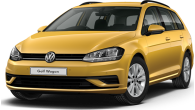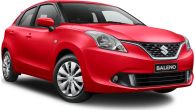The Laser was a shining light in the Ford range for the 20-plus years of its life before being dumped in favour of Focus in 2002. It had been the best-selling small car in the local market at one time and had a strong following from loyal owners who appreciated its economy and reliability. Those same qualities make it a popular choice for young drivers today.
Model Watch
The Lasers that preceded the KJ model were pretty much just rebadged Mazda 323s, but the 1994 KJ was an attempt by Ford to move a little further away from the Mazda.
For the first time there was even a unique body style. It was also unique in that it was imported from Japan whereas the earlier models had been built locally.
An expanded range of three models included three quite different body styles.
There was a four-door sedan, which made use of the Mazda 323 body with unique Ford-styled sheet metal front and rear.
A new name, Liata, appeared on the five-door hatch, while the racy three-door Lynx hatch was aimed at the youth market. Ford's stylists took the Mazda 323 sedan and reworked it with a smoother front incorporating a larger bumper and unique headlamps, with a sharper boot and tail lamps to distinguish the rear.
The KJ Laser sedan was larger than the model it replaced. Its wheelbase was 105mm longer, and the track was 30mm wider, adding up to significantly more head and shoulder room in the front, and more rear legroom.
It was the Liata that really marked the move away from the 323. Given the popularity of five-door hatches, Ford regarded the Liata as the main model in the range.
The Liata was smoothly styled and showed that hatches didn't have to be unpleasant boxes simply delivering function.
Apart from a sportier grille the Liata was the same as the sedan forward of the windscreen, but from there back it was all new. With a steeply raked roof, spoiler mounted on the rear window, and large roundish tail lamps it cut a stylish profile. It was also slightly shorter than the sedan, because of its shorter rear overhang, but that didn't impact on its interior roominess.
There was no mistaking a Lynx. The three-door Laser cut a rakish figure on the road, with its large headlamps that cut into the bonnet and bumper, sharply bobbed tail with a spoiler mounted on the rear glass, and egg shaped rear lamps making a bold statement.
The Lynx sat on a 100mm shorter wheelbase, with a rear overhang shorter than both the Liata and sedan.
Buyers could choose from 1.6-litre economy or a 1.8-litre performance engines. Both were double overhead camshaft units with sequential fuel-injection and variable intake which was designed to deliver torque at the low end when the intake tract was longer and power at the top end when it was shorter.
The 1.6-litre economy engine was standard in the LXi and Liata. It produced 80kW at 6000 revs and 143Nm at 3500 revs, representing an increase of 25 per cent in power and 16 per cent in torque over the carb-fed engine in the previous model.
The 1.8-litre engine was optional on the LXi and Liata, and standard on the Lynx. It put out 92kW at 6000 revs and 160Nm at 4000rpm.
An upgraded five-speed manual gearbox or a four-speed electronic auto delivered the power to the front wheels.
Underneath lay MacPherson Strut suspension, front and rear, with slightly higher spring and shock rates for a sportier feel when the 1.8-litre engine was selected.
All models had power steering, retuned for reduced effort and improved on-centre feel. Brakes were disc all round, with a larger master cylinder for a more solid pedal feel, and ABS was optional on the LXi and Liata and standard on the Lynx. Inside there was a new dash, moulded door trims, more supportive seats with height and tilt adjustment and upgraded sound systems.
The entry-level model on the sedan and Liata was the LXi and there was a Ghia luxury upgrade available as well. When selected the Ghia brought the 1.8-litre engine, alloy wheels, central locking, power mirrors, power windows and four-speaker sound.
In the Shop
The KJ was built in Japan, which generally means better build quality. Add to that a stiffer body than preceding models and you have a car that stands up well. The KJ is not a car that suffers from rattles, unless it has been involved in a crash and poorly repaired.
Mechanically the KJ is sound, the Mazda engines are reliable and give little trouble.
Crunch Time
Dual airbags were initially only available as an option on all models with the 1.8-litre engine, standard on the Lynx, but also became available with the 1.6-litre engine from early 1995.
Owner's view
Owners generally report few problems with the KJ. They appreciate the performance of even the 1.6-litre and fuel consumption around 8-litres per 100km. Roominess is another aspect praised in the sedan and hatch.
How much
Shopping around for a car that has not been involved in a crash and also has a good service record will bring you rewards in this price range. For an entrylevel 1.6-litre LXi sedan you can expect to pay $3500-$4500. Add $1500 and you'll drive a stylish 1.8-litre Liata hatch. For the sportier ride of the Lynx you'll need to pay $5500-$6500.
Rivals
Mazda 323
1994-1996 $3300-$6500
1995-1998 $4200-$7600
1996-1998 $6000-$7600
Verdict
While earlier Lasers were basically re-badged Mazda 323s this model had a unique body style and was fully imported. Ford's attractive styling combined with Mazda quality, safety and reliability make the KJ a good buy as a second car or first car for young drivers.
RATING 65/100
- Stylish and practical small car
- Roomy interior will handle four adults with their luggage
- Reliable Mazda mechanical package in a Ford body
- Check bodywork closely for signs of accident damage
- Well balanced and responsive handling
Ford Laser 1994: LXi Liata
| Engine Type | Inline 4, 1.8L |
|---|---|
| Fuel Type | Unleaded Petrol |
| Fuel Efficiency | 10.5L/100km (combined) |
| Seating | 5 |
| Price From | $2,640 - $4,070 |






.jpg)

.jpg)





































.jpg)
